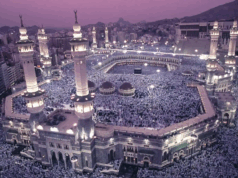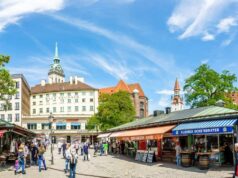The Himalayas, the world’s highest mountain range, are India’s most visited attraction, and rightly so. The magnificent scenery is incomparable and the people are gracious and hospitable. However, India is also a very large country in terms of size, and you shouldn’t expect to see quite all of it on your trip. If there’s one thing we learned from our time in India, it’s that the best way to experience this incredible country is to do it yourself.
India is a country that has many faces. There is the rich, the poor, the lush and the degraded, the beautiful and the ugly. Represented by all of these faces, India is a country that will leave an essential impact on your life. It will beckon you to visit, fascinate you with its landscape and culture, give you a glimpse of its history and leave behind its unforgettable memories.
A lot of people ask us about traveling to Northern India, and our response is always the same: it’s not for the faint of heart. This region of the world is one of the most dangerous places in the world, and those who travel here regularly have developed a certain mentality that helps them to survive. If you’re not prepared, you may find yourself in a situation that is difficult to recover from.. Read more about northern india countries and let us know what you think.
As usual, I observed the clouds on my first day in Northern India.
“Did you notice?” As we left the airport, I remarked to my mother, pointing skyward. “Don’t the clouds seem a little weird after those weeks away?” says the narrator. Here, they’re very near to the earth. It’s almost as if you can reach out and touch them.”
My cloud obsession rekindled instantly upon arrival, as I’ve stated every time I’ve returned from a trip. The clouds were light and fluffy, yet they still had substance, with flat bottoms and puffed-out tops, tumbling layers of white. After the vast open skies of India and Bangkok, the clouds in Montreal seemed to hang by a thread, as if they could come crashing down at any moment, crushing me. Clouds don’t crash, I knew rationally. But, in the blur of jet lag, as I drove back to my parents’ house with my face pushed against the glass, I had my doubts.
“Clouds… yes…” my mother pondered carefully, “but it’s actually the silence.” I’m having a hard time getting used to the quiet. It reverberates in my mind.”
When we return to what we know, each of us senses something different. Clouds are my favorite. The silence was a welcome relief for my mother as she sat in traffic on her way home. There were no horns, shouting, whistles, or animals, goats, or camels on the road. She smiled as she turned to face the window and said, “I sort of miss the cows too.”
Mandawa, India, with a cow and schoolboys in the background
Those who had been told me before I went for India that it would be a place that I would love and loathe, that it would be chaotic and dizzying, and that it would leave an indelible mark on me for years. I was intrigued about India’s impact after so many years of travel. I recall being terrified before leaving for Santiago in 2008, and how strange Southeast Asia seemed when I first arrived in Thailand towards the end of the same year. How would I respond to India’s contradictions?
I’m still thinking about how I want to present tales from Northern India on this website. But first, I’d want to start with a lengthy umbrella article, a rundown of the oddities that made me laugh and the memories that remained. Consider it a follow-up to my pre-trip reading and notes from shortly before I left.
Mostly the good, with a smidgeon of the bad thrown in for good measure. Some are not unique to India, but rather to emerging nations in general. Others are almost entirely an Indian phenomena. I can’t claim I know much about India; for starters, I’ve only been to Rajasthan, Agra, and Delhi. And with just two weeks and a half to go, I hardly had time to look for anything. However, throughout those few weeks, these were the things that stuck out.
Northern India Travel: The Great Wall of China
1. The first is the food

Every Indian province has its own cuisine and culinary traditions. There are so many differences in spice, flavor, and preparation between Punjabi, Rajasthani, and Bengali cuisine. Local specialties exist, just as they do in China and other nations scattered over such a vast physical area. There was so much food. It’s fantastic.
I’m writing from Montreal, dreaming about paneer (cottage cheese cooked in a thick sauce of cream, spinach, or spices) and lassi (sour or sweet shaken yoghurt), among other things.
Saffron lassi with almonds plucked from the alleys of Jodphur. I’m still daydreaming about it…
2. The nod of an Indian head
I don’t have any pictures of this, but there is a GIF on the Internet. The head nod, often known as the “Desi-nod,” is well-documented in travel blogs and publications. The novel Shantaram has a whole section dedicated to it, explaining how the nod may indicate okay, fine, no, or just recognize your existence. And it never, ever went out of style. It’s a simple celebration of whateverness, and it’s wonderful, from little children to auto-rickshaw drivers to adults in hotels or market stalls.
3. Photographic requests from children (or their parents)
People want you to snap their picture no matter where you go in Rajasthan, Delhi, or Agra. This is a highlight not because the process of catching someone else is trivial, but because it establishes a brief but instant connection between you and that individual, typically culminating in some major laughs.
Kids would come up to me from little towns to larger cities and ask for a picture, then want to view it, then give me a thumbs up or a high five, and then disappear. These moments abound in my recollections and photographs, not just from children but also from their parents, who are as ecstatic to see their children on video.
This lovely lady also requested a family picture, but her son is less enthusiastic.
4. Goats
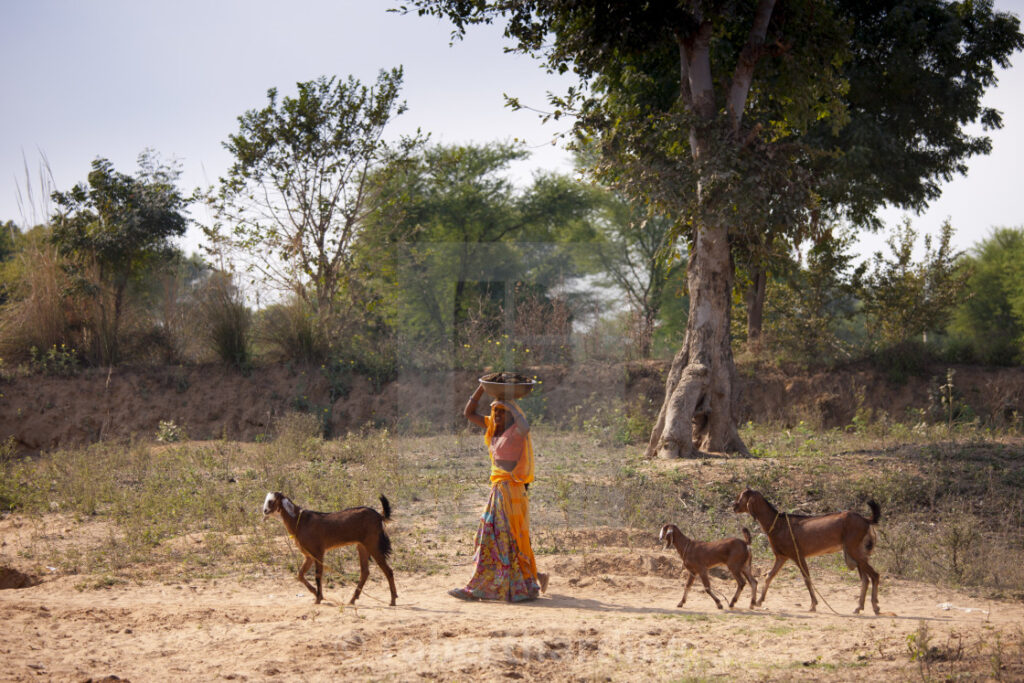
Those who have traveled with me know that I become uncontrollably excited when I see goats. In Jordan, a herd of young goats followed me into the desert, in Mongolia, I often stopped the vehicle to photograph goat-and-sheep grazing herds, and in India, I was ecstatic with the number of goats in the country. Goats may not be on everyone’s “wonderful” list, but they were on mine.
In Chandelao, someone gave me a young goat at random, which I promptly returned to its mother.
5. Avoiding cows
During haying season weekends, I used to assist the farmer across the road from my father, frequently going inside the barn to gaze at the cows. So it should come as no surprise that I am unconcerned with the number of cows in India. I’ll be doing a cow picture essay — how could I not? — but cows get a mention here since they were all so distinct. Dodging cows was an essential part of our journey and certainly provided some fascinating story to our meals, from the calf whose ears we rubbed after supper in Jojawar to the bull that made a dash for us in Jodphur.
My mother’s expression sums it all: “BIG COW, SMALL ME.”
6. There are a lot of inquiries and requests for pictures from women and girls
I recently discussed how traveling as a woman enables you to straddle both worlds, engaging with both women and men while overseas. Women in India were particularly interested, coming up to me for pictures, asking what I thought about my time in the country, and asking how India compared to other nations or my own. In such a short time in the nation, many enlightening and thought-provoking conversations took place. Despite my short visit to their cities, these ladies were kind enough to share their own personal experiences with me. (And for my mother, who chose to snap a picture of herself every time someone asked for a photo with me.)
Near Bikaner, girls at a rat temple.
7. Complete pandemonium
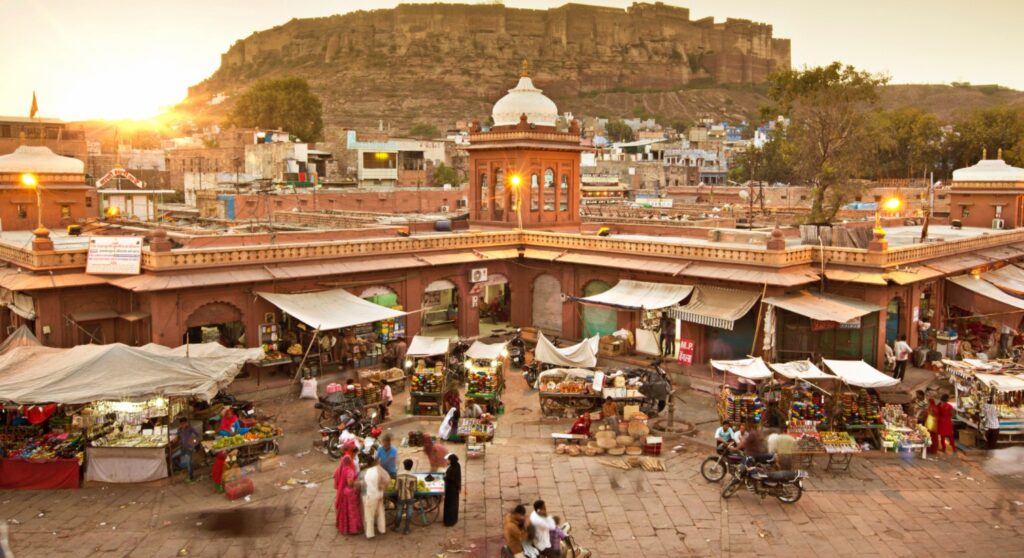
I’m a city slicker. I like Saigon because of its frantic pace and the constant need to keep your eyes peeled for the next delectable morsel. India was frantic and hectic as well. I’ve been informed that the South is less hectic for people who don’t like cities – I have yet to visit, but this is the advise I got.
Northern India will appeal to people, like myself, who get their energy from a whirlpool of noise and activity. All of the buzzing and screaming made me feel like I was in my own stop-motion movie, standing motionless as anything and everything spun maniacally around me, from Delhi to Jaipur to the night markets of Jodphur. If it seems like a nightmare, you’re not alone; my mother wasn’t a fan of the pandemonium either.
During rush hour in Jaipur, there are rickshaws, auto-rickshaws, buses, pedestrians, motorcycles, shouting, honking, and cows bleating.
8. Spice Paradise
In my Ode to Spices article, I discussed why spices were important to me and how they allowed me to eat abundantly while having celiac disease. India is the epicenter of spices, herbs, and dry flavorings, and I certainly didn’t get my fill during my brief visit. There’s so much more to discover, taste, and understand.
Bikaner’s dried chili
9. Vibrant saris
Saris shone out against the sandy surroundings and bland sandstone and marble. The vividness of the saris did not diminish, even if the kind of sari varied based on the city. It made me sigh and glance at my closet, wondering why I was wearing so much black. They were all stunning, from the decorations to the basic veils to the more ornate matching pieces.
Bikaner has a lot of women wandering about.
10. Stunning architecture
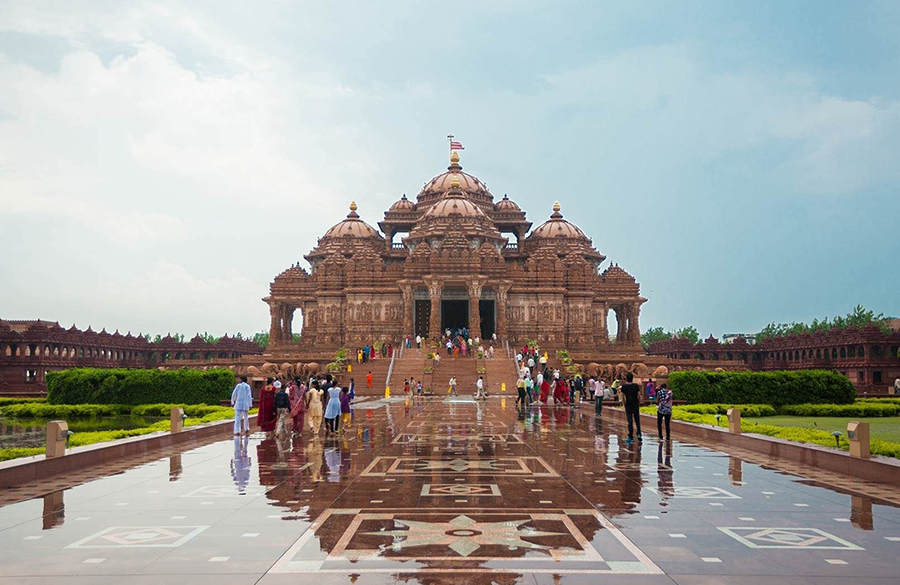
I’ve said it before, but I’ll say it again: when you see the most sophisticated, detailed architectural marvels, you can’t help but think to yourself, “damn, my nation is so young.” When I see forts and gates, Mughal mosques, palaces and havelis, and twisting walls following the summits of hills, that’s what comes to mind. Go to India and open your eyes if you want to be reminded of the immediacy of the moment. Within seconds, it will make you feel insignificant in the great scheme of things.
While the Taj Mahal is the most renowned of the sites we visited, the gleaming red sandstone forts were my favorites. They were hard to overlook in the final hours of sunshine, emotionless and magnificent, a testimony to their need (keep people out) and constructive talent. Of course, I only visited the north, and the architecture in other areas of the nation is very different. However, whenever I think of Rajasthan, I instantly think of ochre and archways.
In Jodphur, a view from the Mehrangarh Fort.
11. There are a lot of sunsets
Fact: Sunsets are better when seen from afar.
Jodphur’s sunset with a horseman
12. Moustaches are number twelve (and hennaed moustaches and beards).
There are so many ‘mos and so little time. Moustaches that are very intricate, curled up and oiled, and showy. In addition, many Muslim men in Northern India had their beards hennaed and colored a brilliant orange color. Muslim males are not allowed to use non-natural colors, therefore they use henna, according to friends in India. (If anybody knows otherwise, please let us know in the comments!)
In Chandelao, indigo is used to dye clothes.
13. Pudin Hara
Readers (both Indians and foreigners) wrote comments on my fan page about the cuisine when I first arrived in India, encouraging me to pick up some of these magical green pearls.
They’re made from concentrated mint and herbs and should be eaten after a meal to relieve indigestion and heartburn. They also work hard, oh boy, do they work hard. By the conclusion of my vacation, I’d hooked everyone in my vicinity on them. “You will burp up mint instead of curry,” one of my readers observed.
This is a wonderful way to finish a meal, even if your stomach is unhappy. They’re also available on Amazon! At $3.54 for ten pearls, they are much more costly than the $0.24 per ten in India. Even yet, I can’t complain since this stuff is incredible.
14. Saunf
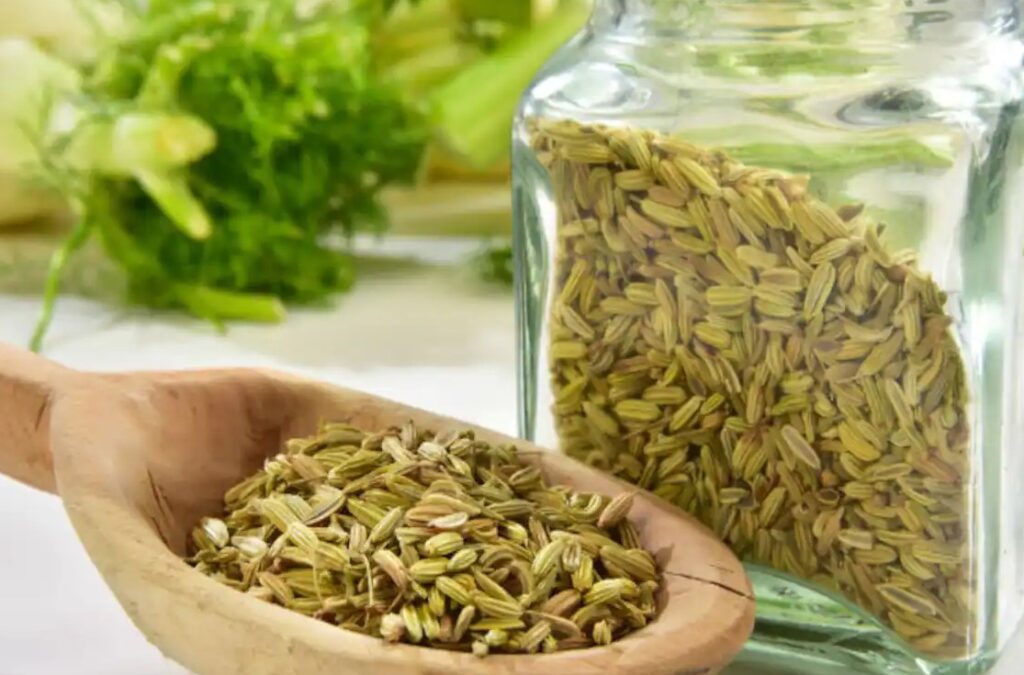
Fennel seeds, known in India as saunf, are given with sugar after a meal, sometimes coated in sugar and other times in a bowl, as seen in the picture below. They can come in packages containing rose petals, anise seed, and fenugreek, which adds a punch of flavor. After dinner wintergreen mints, the powdered pink disks placed in a dish in front of a restaurant’s cashier, were something I grew up with. Why do we utilize wintergreens when fennel is available? Fennel calms the stomach, gives your tongue a fresh licorice burst, and is simple, simple, simple. I returned to my mother’s house in Montreal and went straight to the bulk shop to buy a large bag of fennel. I’ll be assured minty, anise-y pleasure for months with those Pudin Hara pills.
In India, fennel and sugar, as well as our bill for a four-person feast – $6 total.
15. Hanging out with my mother
My mum and I last traveled together when she came to see me in France. I was studying at Aix-en-Provence for a master’s degree. We hired a vehicle and drove a total of 2000 kilometers in a few weeks, looping up to Paris, to Arras, back to Provence, and around the twisting hairpin bends of Eze and Gordes, as well as other little villages. The journey was lovely, but it was a logistical nightmare; I insisted on driving, we got lost a lot, and we often found ourselves navigating those bends late at night.
The logistics were out of my hands this time, and although I sneaked my mother away to eat street food when I could, we were whisked from point A to point B without my involvement — which was probably a good thing. After all, despite my years of travel, I have a habit of leaving things to the last minute, which is inconvenient for others. My mother says she enjoyed India more than she anticipated. She’ll write something herself, but she had a fantastic trip and never got sick from the street food. In addition, we got to spend three weeks together, she got to celebrate her birthday in Bangkok, and she got a taste of my post-law life. She’s always been supportive, but she’s always been perplexed by how I met people, ate, and did things. These weeks in India and Bangkok allowed her much greater say in those decisions, which would ultimately benefit all of us.
16. Havelis
We slept at older historical guesthouses, known as havelis, rather than hotels because of the tour we selected (Land of the Maharajas). On the one hand, this meant that we were sometimes secluded and without a choice of food — though thankfully, these havelis had chefs who not only cooked delicious meals but also allowed me inside the kitchen — but it also meant that we were staying in historically significant locations. Each had a tale to tell, as well as someone to explain how India and its property ownership had evolved over time. The historic buildings and their associated tales made the trip more personal for me and my mother, a historian, while not being a complete picture (it was just a few weeks after all).
Mr. Singh, the proprietor of the Chandelao haveli where we slept, told us about his home’s history.
17. Autorickshaws
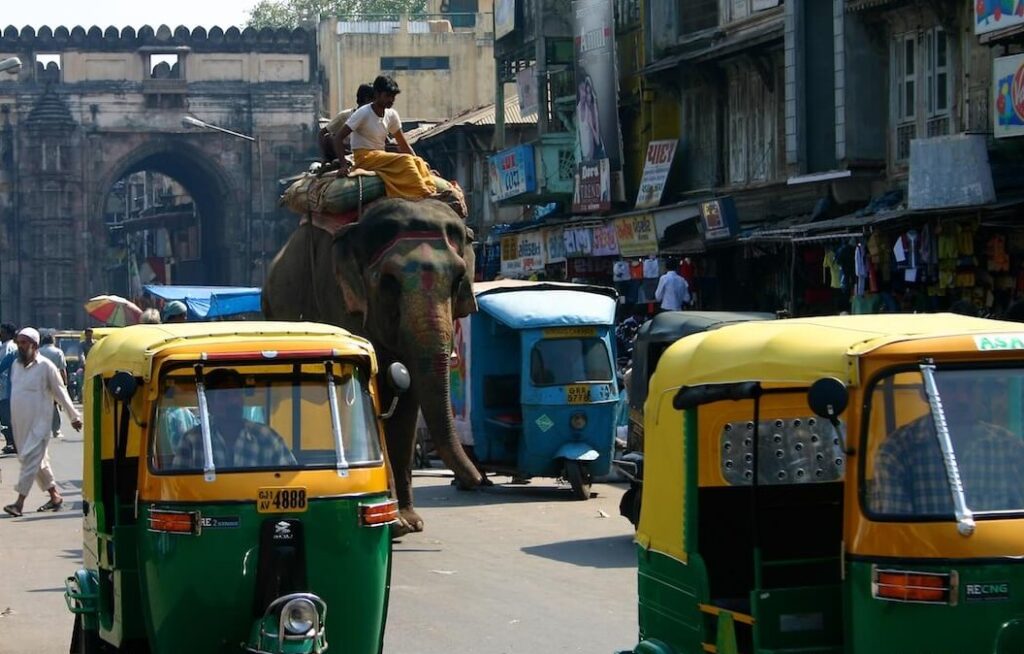
I was immediately chastised for referring to these vehicles as tuk-tuks on Instagram. Auto-rickshaws, which look like tuk-tuks and crisscross Northern Indian towns, are the taxis you’ve always wanted but didn’t know existed. They were a lot of fun, with raunchy drivers, funny commentary, and — as anticipated — some real bargaining to obtain the price you know you desire.
FTW for an auto-rickshaw ride.
18. Chilli and lime are used to fend off evil spirits
Chilies and limes, like the blue nazar boncugu in Turkey, are said to fend off evil. They were seen dangling from the grills of vehicles just above the ground, over doors of havelis, above awnings in stores, and on the rearview mirrors of automobiles and buses, strung vertically and sometimes plastic. It was a completely unexpected peculiarity, and once I saw them, I began to see them everywhere.
To fend off bad spirits, use chili and lime.
19. Traveling to Northern India on a public holiday
We were in town for Navratri, a 10-day Hindu holiday that culminated in the Dussehra feast. As a consequence, many people in the region were on vacation. This meant that not only were we visiting Indian shrines, temples, and monuments, but so were almost all of the local schoolchildren. It provided opportunities to engage with inquisitive children, to photobomb a class picture (and get chastised by the teacher while the pupils giggled in the background), and to see Indian visitors visiting their own country’s renowned sites. It was a lot of fun.
At Agra’s red fort, a group picture was taken.
20. Frangipanis may be found in abundance
They have a wonderful aroma and can be found almost anywhere in Northern India. There are no issues.
Udaipur’s Frangipani
22. Bhujia
Chickpea flour snacks seasoned with cardamom, chili, and other spices and sold in bags as well as in bulk and by weight, as shown in the picture below, from Bikaner to Jaipur to Delhi. These are safe to eat as a celiac, yet they’re spicy as hell. It was fantastic.
Bikaner’s bhujia
22. Truck embellishments
Indian truck drivers, like jeepney drivers in the Philippines, take pride in their appearance. Below are two of the numerous colorful choices available from the trucks in the north.
Trucks at a rest point on the outskirts of Delhi
Travel to Northern India: the Bad & the Ugly
A few items remained that were less favorable than the preceding list.
1. Negative consequences of bad tourism
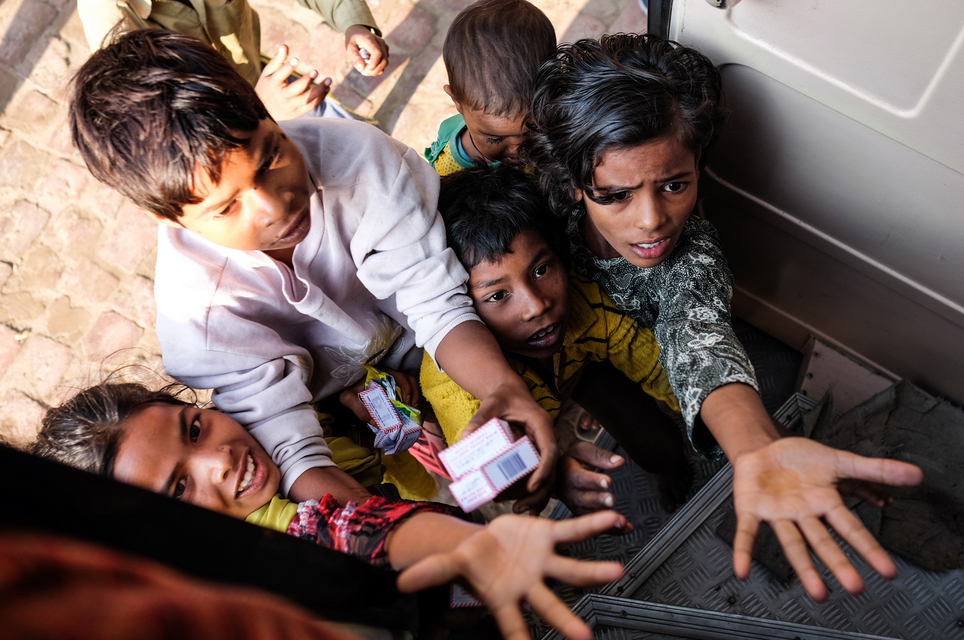
Children in a couple of the smaller towns would come up to me and ask for pictures, then sit and gaze. They would either walk up and shout “boom boom?” while making obscene hand gestures, or beg for money, pencils, or chocolate in places where tourism has increased in recent years.
I don’t carry any of those items with me, as I would in any poor nation; if I need pens, I go to the school and inquire about how I may donate supplies directly to the school. No, those teeth aren’t candy – they’re vital! But this is based on years of travel and study, and of course, sometimes the things we believe are wonderful or have a great effect turn out to be the opposite after we leave. I’m not blaming any one group or tourism in general, but it makes me sad when individuals don’t consider the long-term consequences of their so-called kindness.
Also, why are you filming individuals with your camera in their faces? It’s one thing to have someone come up to you and request a picture, and it’s another to ask them first. It’s one thing to go up and take a picture and then leave, like this lady did.
Lady, first and foremost, inquire.
2. There are men peeing all over the place
I don’t mean nasty in the sense of “can’t they go someplace else?” since I’m fully aware that public restrooms are in short supply. I, too, needed to pee often and had difficulty locating a suitable location. (Perhaps I’m simply envious of guys who can pee anywhere they want?) In any case, there was a man peeing every time I turned around. I tried to catch the train tracks in the picture below. I had no clue Peeing Man #24523532 had been apprehended since I had not seen him. But he was there. It isn’t only India that is affected. The same can be said for Vietnam: there was a tree outside my former apartment that we dubbed “The Urinating Tree,” yet it’s still a “ugly” due to the smell and the constant threat of coming into touch with peeing guys.
3. Garbage is strewn around the place
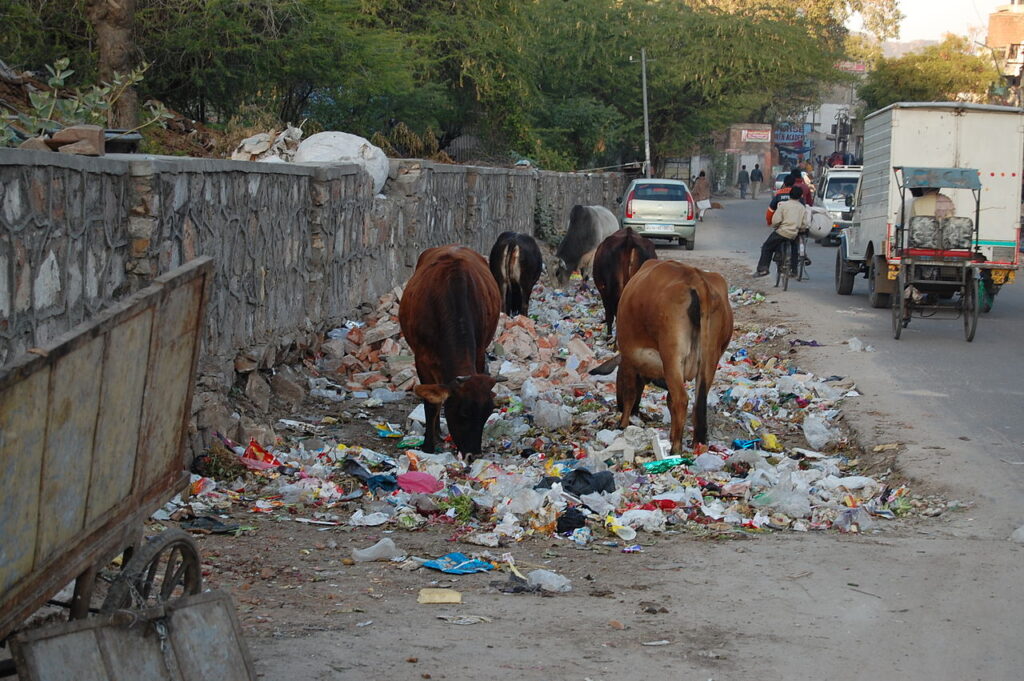
Again, this is not unique to India, but in a nation with such a large population, it’s understandable that trash would multiply exponentially. In Delhi, plastic bags are no longer permitted (instead, soft fabric bags are provided), but the trash, oh the garbage. There were heaps and mounds of it on the ground. When the townpeople in Chandelao asked why I wouldn’t throw my plastic tea cup on the ground, the owner of our haveli got into a furious argument with them, saying that it would only create additional filth and possible issues. They really disagreed with him on his points, oblivious to the issue. That’s something I’ve seen a lot in other places, like the lady on the train in Myanmar who waited to toss her styrofoam out the window because “people won’t see it.” (She had no clue it wouldn’t decompose.) I don’t have any concrete solutions (education on the long-term impacts of plastic is a good start, and I know it’s being done), but trash deserves to be included since it’s so unavoidable.
4. Dung from a Cow
A large number of cows equals a large amount of cow manure. That’s all there is to it.
5. Pushy salespeople
My mother saw a man in a peaceful corner of the Jaipur market who, apparently out of nowhere, inquired as to why visitors refuse to buy from him when he approaches them to offer anything. She replied that in our culture, it is not usual for someone to approach us hoping to sell us anything, and that if we needed something, we would go out and get it. “But how would you know it is there?” he replied, puzzled.
The touts, oh, the touts. Of course, we were warned, and since we were on a tour, we were mostly protected from them. However, pushy salesmen may be found in larger tourist centers throughout the globe, and you will feel tired after wading through them. Of course, everyone has to earn a livelihood. However, the touts in India, particularly in Agra, were more aggressive than I had seen in other countries.
6. Boys in their teen years
This isn’t only a problem in India; it’s a problem all around the world. THE WORST are adolescent guys. When folks in Myanmar thanked me for wearing the longyi or gave me food because I was “Burmese-sized and needed to expand,” adolescent guys would scream, “Where are your jeans, lady?” With a few exceptions, such as the teenaged guy who attempted to run over my mother in Jaipur and the teenaged kid who tried to run me over in Jojawar, people in India were mostly friendly. (After he drove off in a cloud of dust on his motorcycle, I said to his buddies, “Your buddy suuuuucks.”) I’m sure there are beautiful adolescent guys all over the globe, but the interaction that has stuck out, regardless of location, hasn’t been very good. Even then, the good news is that kids do grow up, right? ?
7. The Temple of the Rat
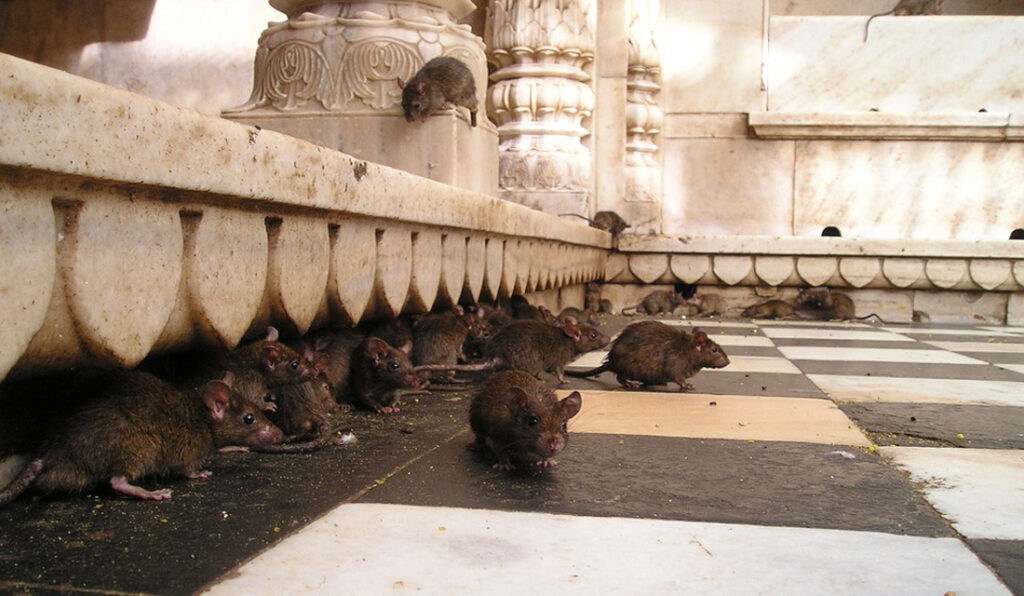
I was happy to attend the rat temple, but I was not happy when the guy in front of me started sprinkling rat chow on my bare feet so the rats would come and scamper over them. RANDOM MAN, YOU’RE NOT COOL. That’s not cool.
Thousands of rats have taken up residence in the temple, which is dedicated to Hindu guru Karni Mata. They resemble field mice with scrawnier tails and are smaller than what we’re accustomed to in North America. The temple was constructed in the 1900s and was packed with pilgrims seeking wealth and health by paying respect to Karni Mata. Because no shoes are permitted within the temple, I had a pair of socks on, which I immediately removed as soon as I exited. I’m not scared of rats, but when there are hundreds of them, they don’t seem as cuddly. It was an intriguing halt near Bikaner that still gives me chills when I think about it.
Without a closeup, it’s not a rat temple. All of the coconut bits were being hoarded by this man.
8. Monkeys
Oh, monkeys, monkeys, monkeys, monkeys, monkeys, monkeys, monkeys, monkeys, monkey They make a beeline for me, maybe because I am not big enough to pose a danger, or perhaps because they know I am not fond of them — whatever the reason, they make a beeline for me. Monkeys have already made me a target, stealing water, digging through my pack for food (despite the fact that there was none), and throwing away my shoes at a shrine. I understand that one monkey cannot represent all monkeys, but I’m not a fan. In India, there are a LOT of monkeys.
“Hey fellas, the little one may have some food – let’s get going!”
And there ends my India introduction article. I’m not known for my brevity. But, even after years of travel, I wanted to provide an overview of the things that stuck out and remained.
I haven’t addressed the more controversial problems of gender norms and women’s treatment. I didn’t have enough time there to talk about such difficult topics, but I strongly encourage people to read Amartya Sen’s brilliant, well-researched article.
I would strongly suggest the following books if you wish to learn more about India:
- Tahir Shah’s Sorcerer’s Apprentice (Kindle version just $2.99)
- Aravind Adiga’s The White Tiger (Kindle version)
- Vikram Seth’s A Suitable Boy
- David Gregory Roberts’ Shantaram (Kindle version)
- Rohinton Mistry’s A Fine Balance
- William Dalrymple’s City of Djinns: A Year in Delhi
- The God of the Insignificant Arundhati Roy is an Indian author (Kindle version)
- Behind the Beautiful Forevers: Life, Death, & Hope in a Mumbai Undercity, by Katherine Boo (Kindle version)
- V.S. Naipaul’s India: a Million Mutinies Now (Kindle version)
EDIT: Several of you have emailed me inquiring about my camera. I’m using an Olympus E-P3 camera, a micro-4/3ds camera from 2011. (I’m tiny and didn’t want to carry a DSLR around with me.) I’ve coupled it with a Panasonic 20mm “pancake” lens, which is ideal for macro food photography. All of the pictures above were taken with the 20mm lens since I lost my other lens when I traveled to India.
As part of G Adventures’ Wanderers in Residence Program, I was sent to India to record my trip. As a result, they were able to cover the expenses of flights and tours.
There are so many places to travel to in India, it can be hard to decide where to go first. North is full of mountains, rivers, and beaches, while the South is full of temples, palaces, and pagodas. But what is the best time to visit?. Read more about is punjab in north india and let us know what you think.
Frequently Asked Questions
Is North India safe for tourists?
North India is generally safe for tourists. However, there are some areas in the north which have a high crime rate and should be avoided.
What should I avoid in India?
Avoid any food that is not cooked well, as it can cause stomach problems and other health issues.
Is India a dangerous country to visit?
India is one of the safest countries in the world to visit.


